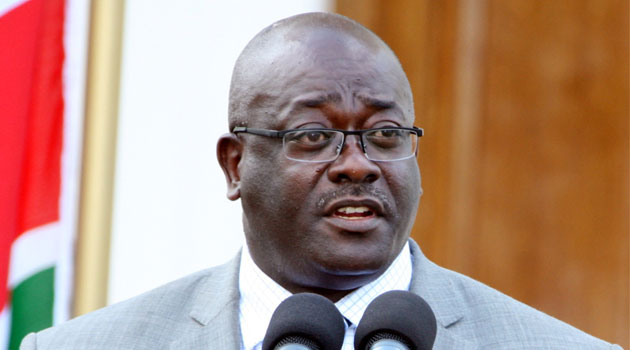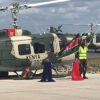
“The collaring will help us monitor the lions and we can take preventive measures before they get out of the park and became a threat to Nairobi residents,” he said/JEREMIAH WAKAYA
NAIROBI, Kenya, Jan 23 – The Kenya Wildlife Service (KWS) has collared a lioness in an exercise geared towards enhancing monitoring of 38 lions domiciled at the Nairobi National Park.
KWS Director General Kitili Mbathi said the collaring of the lioness which brings to six, the number of collared lions in the park, is expected to eliminate cases of the king of the jungle veering off the park as witnessed in the recent past.
“The collaring will help us monitor the lions and we can take preventive measures before they get out of the park and became a threat to Nairobi residents,” he said in reference to the shooting of a lion named Mohawk in Isinya town early last year, when it pounced on a pedestrian after escaping from the park.
Mbathi who was speaking on Monday at the KWS headquarters where he received a donation of six collars and eighteen monitoring cameras from the International Fund for Animal Welfare (IFAW), said the collaring of lions will bring to an end human-wildlife conflicts which have often resulted into the killing of wildlife as was the case with the 13-year-old Mohawk.
According to the Head of Programmes at IFAW, Steve Njumbi, the collaring will not affect all the 38 lions at the park, stating that the programme will only focus on lions which are more likely to loiter around compared to lionesses.
“Out of the 38, some 27 are lionesses. Usually females are unlikely to move out of the park. So you need to collar a few of them (lionesses) so that you keep track of the cubs they walk with then collar a good number of the sub-adult males and mature males.”
Six more lions will be collared to meet the deficit of the number of lions earmarked for the programme.
“KWS already had five of the sub-adult males and mature males collared,” he said. “The deficit is six.”
Apart from the installation of collars on the selected lions and lionesses in the park, KWS also intends to mount monitoring cameras across the park to further enhance the management of their population.
“The camera traps will also help us identify exactly what we have, where we have it in certain areas within the park so that we can manage it in a more intensive manner,” said Mbathi.
Earlier in the day, Mbathi led KWS veterinary officers in an early morning operation that led to the identification of the lioness before it was collared – an exercise that lasted close to two hours.
The collar comes with a Global Positioning System (GPS) in place which rangers will use to identify the location of lions in the park.










































